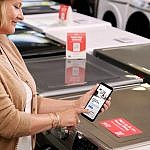Featured in Retail Customer Experience.
At the heart of every e-commerce business, setting up the right logistics system for processing and implementing deliveries is vital. As technology continues to improve, customers’ desires for deliveries match the need to know their packages’ locations.
For any business to successfully carry out deliveries, efficient tracking is crucial. While logistics companies can now provide simplified tracking systems for customers, the concept and tracking methods weren’t always fast or accurate.
Evolution of Delivery Tracking Systems
Long before businesses set up in-house deliveries, transportation of packages in the late 18th and 19th centuries was by mail. While companies took measures to ensure the safety of packages, there was little to no traceable information about the package.
The 1900s
Local postal services in different countries stepped into the computer age with variations of tracking systems for their mail. However, optimizing these systems for efficiency and accuracy was a bit of a challenge. Then, FedEx introduced tracking numbers for the delivery process in the late 1900s.
Initially, FedEx created the tracking number to help the company manage quality control. However, in 1979 it was modified as a Customers, Operations, and Services Master Online System (COSMOS).
In 1990, UPS began electronically tracking packages with its Delivery Information Acquisition Device (DIAD). The DIAD was a clipboard-like device that drivers used to upload information at a UPS facility after completing a delivery route.
FedEx achieved another delivery milestone in 1994 when FedEx.com launched. The website created tracking IDs for businesses, providing the numbers and links for customers to track their packages.
Millennium Advancements
From the early 2000s to the 2010s, in line with the evolution of the UPS DIAD, improvements in technology introduced real-time location reports and automated analytics to tracking systems. Tracking packages were simplified for customers while providing data to help companies manage and analyze sustainability.
Businesses, including Amazon and AliExpress, offered customers the ability to track packages with the courier’s route and contact information. The improved systems made it possible for businesses to manage customer relationships by providing reliable and accurate tracking information.
Today, every business offers deliveries to customers through its couriers, which may belong to them or source from third-party companies like Dolly.
The Technology behind Product Tracking
For customers, the delivery process is straightforward. They request the package, get the tracking information, and confirm that they have received the package. For the business, it is not so clear.
The technology behind real-time, map-oriented last-mile tracking for product delivery is extensive. However, for any on-demand delivery company to be efficient, integrating location reporting services is a must.
From customer locations to courier routes, location-based services are the technology behind real-time product tracking for last-mile deliveries. Services like Google Maps Geocoding and Directions provide navigated directions with additional details like shortest and fastest routes. In addition to these services, Distance Matrix calculates the distance between locations through Google Maps and converts it into an ‘Estimated Time of Arrival ‘(ETA).
Google Places is another service for product tracking that provides the address, phone number, website, location description, and other details about different places.
The unique features of these services support seamless tracking systems for businesses to optimize efficiency and customer satisfaction.
Why Real-Time Tracking Is Imperative
Customers are more willing to engage with a brand that offers speedy and convenient delivery services. Real-time tracking is one of the best ways to ensure customer satisfaction with the current demands for delivery, for the following reasons.
It avoids scheduling challenges
Final-mile tracking information provides your customers with details that ensure they’re available to receive their products. This, in turn, helps avoid missed deliveries, which can displease customers and affect your business’s reputation.
It helps manage risks
Real-time GPS allows you to send deliveries out in the most optimal weather and traffic conditions. This helps increase productivity, while managing transportation and labor costs.
It builds customer loyalty
Customers appreciate when a business pays attention to their delivery needs. Efficient tracking of your last-mile delivery system improves customer satisfaction, meaning an increase in customer retention.
It keeps same-day deliveries on track
Optimized tracking helps you better analyze the best way to deliver products quickly, based on distance between locations. Good are delivered to your customers, in excellent condition, and within their time frames.
Business Growth
As a business owner, information about packages shipped out to customers is essential for measuring business growth. You can figure out the areas with more orders, catalog orders, and plan your order processing around the metrics. With the tracking records from an optimized system like Dolly, you can manage your service offerings.
Get quality assurance for your packages and keep up with delivery agents till your customers get their orders! Tracking the last mile is the icing on delivery services offered by any business.
Dolly helps you move on your schedule and at an affordable price. Book now and see the difference: https://dolly.com.






